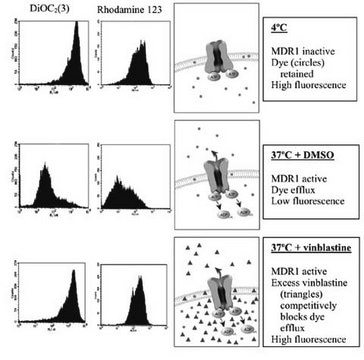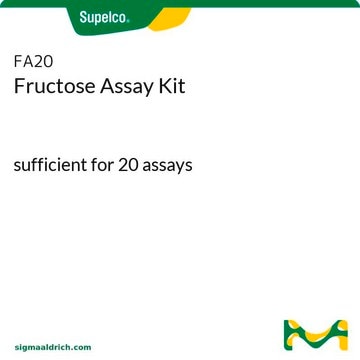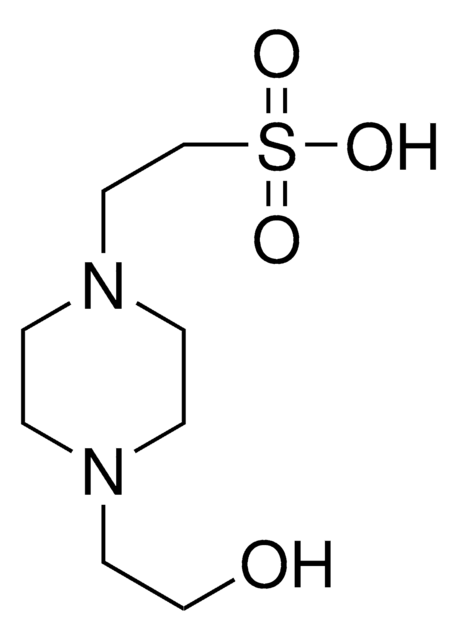MAK161
Multidrug Resistance Assay Kit
(Fluorometric MDR Assay)
Synonym(s):
MDR Assay
Sign Into View Organizational & Contract Pricing
All Photos(2)
About This Item
UNSPSC Code:
12161503
NACRES:
NA.84
Recommended Products
usage
(Fluorometric MDR Assay)
application(s)
pharmaceutical
detection method
fluorometric
relevant disease(s)
cancer
storage temp.
−20°C
Gene Information
human ... ABCB1(5243) , ABCC2(1244)
mouse ... ABCC2(12780)
rat ... abcc2(25303)
Related Categories
General description
Acquired resistance to chemotherapy drugs, multidrug resistance or MDR, is a major contributor to treatment failure for many types of cancers. MDR is typically associated with the increased expression of two ATP-dependent drug efflux pumps, P-Glycoprotein (P-gp or MDR1) and the Multidrug Resistance-Associated Protein (MRP1). These pumps actively expel chemotherapeutic agents, typically hydrophobic amphipathic natural products, from the cytoplasm to exterior of the cell.
This kit is utilizes a hydrophobic fluorescent dye molecule to assess MDR activity in cells. This dye rapidly penetrates cell membranes and becomes trapped resulting in an increase in fluorescence intensity (λex = 490/λem = 525 nm). In cells expressing MDR transporters, the dye is rapidly extruded by the transporters, resulting in decreased fluorescence intensity.
This kit is utilizes a hydrophobic fluorescent dye molecule to assess MDR activity in cells. This dye rapidly penetrates cell membranes and becomes trapped resulting in an increase in fluorescence intensity (λex = 490/λem = 525 nm). In cells expressing MDR transporters, the dye is rapidly extruded by the transporters, resulting in decreased fluorescence intensity.
Features and Benefits
Compatible with high-throughput handling systems.
Suitability
This kit is suitable for the screening of MDR pump inhibitors or for identifying cell lines with high MDR activity.
Principle
This kit is utilizes a hydrophobic fluorescent dye molecule to assess MDR activity in cells. This dye rapidly penetrates cell membranes and becomes trapped resulting in an increase in fluorescence intensity (λEx = 490/λEm = 525 nm). In cells expressing MDR transporters, the dye is rapidly extruded by the transporters, resulting in decreased fluorescence intensity.
Certificates of Analysis (COA)
Search for Certificates of Analysis (COA) by entering the products Lot/Batch Number. Lot and Batch Numbers can be found on a product’s label following the words ‘Lot’ or ‘Batch’.
Already Own This Product?
Find documentation for the products that you have recently purchased in the Document Library.
Drug resistance in cancer: an overview.
Housman G, et al.
Cancer, 6(3), 1769-1792 (2014)
Non-coding polymorphisms in nucleotide binding domain 1 in ABCC1 gene associate with transcript level and survival of patients with breast cancer.
Kunicka T, et al.
PLoS ONE, 9(7), e101740-e101740 (2014)
Mechanisms and insights into drug resistance in cancer.
Zahreddine H and Katherine B
Frontiers in Pharmacology, 4, 28-28 (2013)
Our team of scientists has experience in all areas of research including Life Science, Material Science, Chemical Synthesis, Chromatography, Analytical and many others.
Contact Technical Service


